SF1 – Directional Shark Fin Antenna
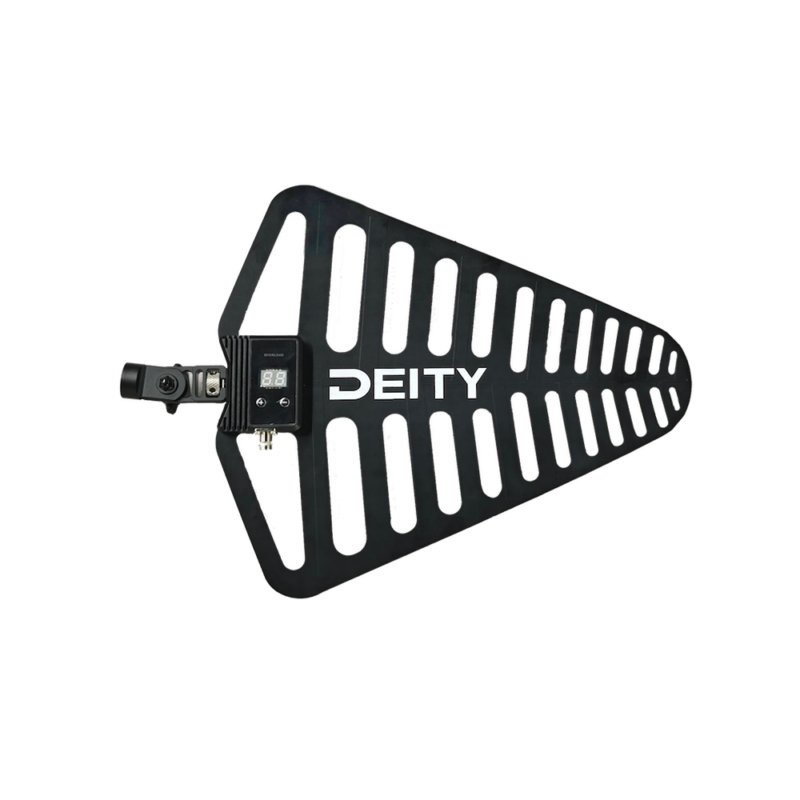
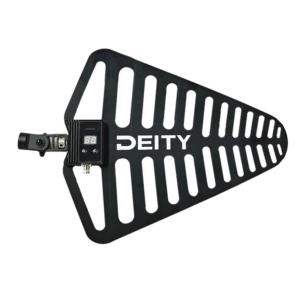
Quick Look
- Ultra-Wide Spectrum Coverage; 470MHz ~ 1GHz
- Active RF Gain Circuitry
- Metal Housing for Electronics
- 50 Ohm BNC Connector
- Vented for Outdoor Work
- Female ARRI 3/8-16 Accessory Mount; Anti-Rotation Mounting Solution
The SF1’s wide frequency range and robust design make it versatile for different wireless systems, including Deity’s THEOS ecosystem and other brands. Its weather-sealed housing ensures reliability in various conditions, and the metal mount brackets provide secure installation.
$499
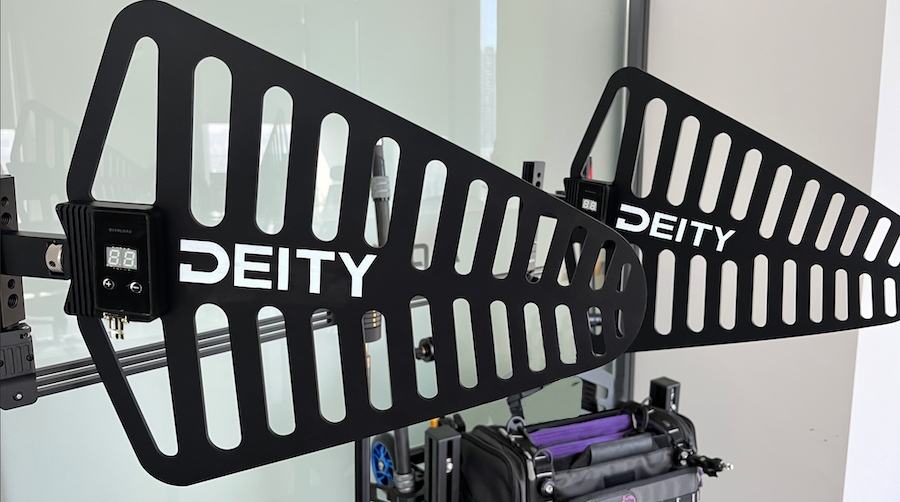
All SF1 – Directional Shark Fin Antenna features
Fewer Surprises
SF1 is built to win back signal quality in messy RF. Its directional panel and ~60° optimal pickup angle let you point coverage at the talent and ignore the noise floor that lives off-axis—handy on festival stages, crowded corporate ballrooms, and RF-dense backlots. Keep line-of-sight, mount high, and space diversity antennas at least a wavelength; do a quick “walk-around” and you’ll know exactly where your wireless pickup zones are before the show rolls.
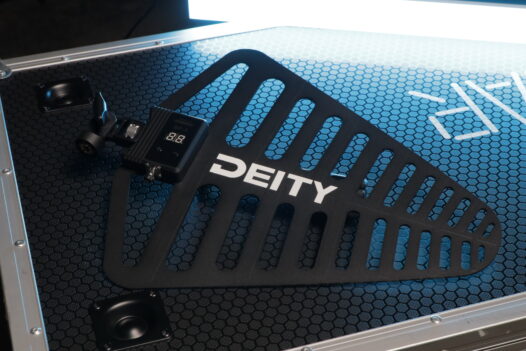
More than Basic Gain
Long cable run to the cart? Dial in just enough active gain—SF1 gives you −9 dB to +21 dB in 1 dB steps with a bright readout, so you can match the line loss you’ve measured instead of guessing. If the front end starts to saturate, the red overload indicator tells you instantly; back the gain down and preserve headroom rather than amplifying the entire RF neighborhood. And if there’s no DC bias available, SF1 still pulls its weight as a passive panel with 6 dBi gain.
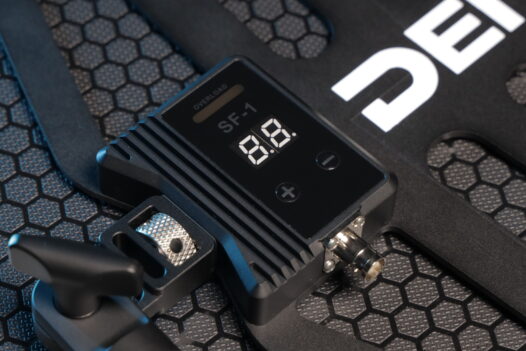
More Versatile
From theater to house of worship to TV sets, the SF1 covers 470–960 MHz, so your kit doesn’t need to change when the venue does. Standard 50 Ω BNC connectivity drops right into pro distros and low-loss coax; an OIP3 of 39 dBm helps keep dynamic range intact in crowded spectrum. Power is frictionless—just feed 12–16.8 V DC bias from your receiver or distro and you’re live.
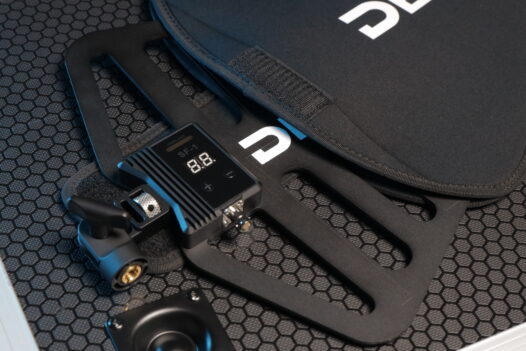
Built for All Environments
Rain on the sideline, dust on location, or a week of load-ins—SF1’s IP54 rating and −10 °C to +55 °C operating range make it a safe pick for real-world crews.
The slotted design also allows wind to pass through it, preventing it from turning into a sail.
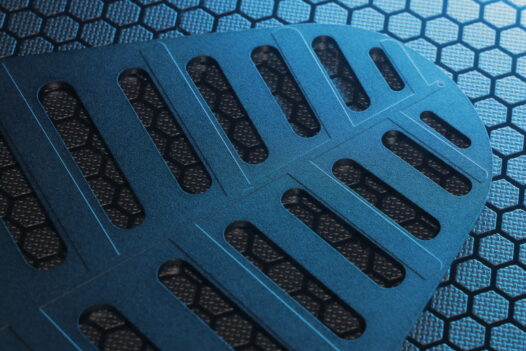
Cable-run Strategy Made Simple
SF1 is designed to compensate for what your cable is taking away—nothing more, nothing less. Use the attenuation table as a starting point, then trim gain to suit the environment; don’t assume “more” equals “better,” because excess gain boosts interference and ambient RF right along with your signal. The result is a cleaner link, longer useful range, and fewer surprises mid-take.
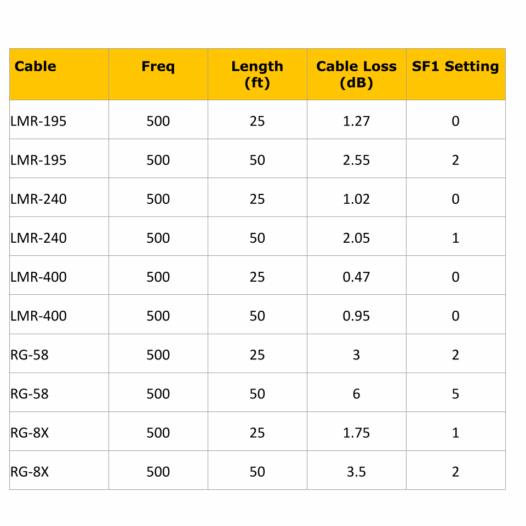
Quick, Solid Mounting
The SF1 mount features a 3/8" Locator Pin design that prevents twist and turns when trying to mount it accurately. The all metal CNC mounting hinge accepts both 3/8" and 5/8" via an adapter.
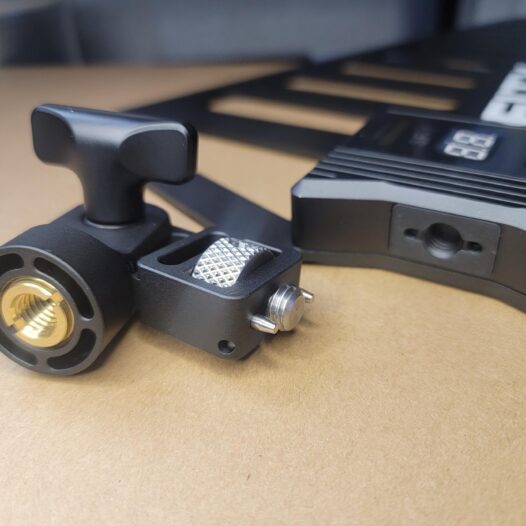
specifications
| RF Freq Ranges | 470 ~ 960 MHz |
| Input Impedance | 50 Ohm |
| Active Gain | -9dB to +21dB (1dB Steps) |
| Passive Gain | 6dBi |
| OIP3 | 39dBm |
| Pickup Pattern | Directional |
| Pickup Angle | 60° Left/Right Off Center |
| Polarization | Linear |
| RF Input Power | 30mW Max |
| Power Requirements | DC 12 ~ 16.8V |
| Power Consumption | 12V/90mA (Max) |
| Waterproof Rating | IP54 |
| Operating Temperature | -10°C to +55°C |
| Storage Temperature | -20°C to + 70°C |
| Operating Humidity | 5% ~ 95% |
| Dimensions (L*W) | 376.5 * 328.8 mm |
| Weight | 532g |
| Connector | 50 Ohm BNC |
| Mount | 3/8" and 5/8" Thread |
Support
- Visual Appearance: The triangular shape of LPDA antennas, often with elements extending outward like the ridges of a fin, looks similar to a shark fin slicing through water.
- Directional Nature: Like a shark “honing in” on prey, these antennas are directional, meaning they are designed to focus on specific signals while rejecting interference from other directions.
- Industry Adoption: The nickname “shark fin” became widely used among sound mixers and RF coordinators as a casual, descriptive term, despite the antennas being technically LPDA antennas.
- LPDA antennas used in wireless microphone systems are designed to provide gain and improved reception in a specific direction.
- They often have a narrow beamwidth, helping sound professionals maximize reception range and minimize RF interference.
- These antennas are commonly used in live productions, film sets, and broadcast applications, where reliable wireless microphone performance is crucial.
- To look cool